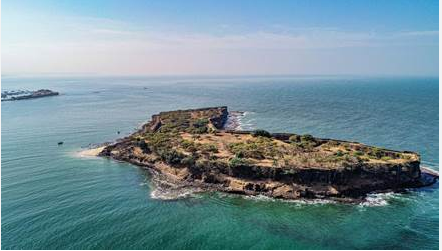Context:
India recently put ‘Maratha Military Landscape of India’ as its nominee for inclusion in the UNESCO Heritage List for 2024-25.
About Maratha Military Landscapes of India:
- It showcases the exceptional fortification and military systems conceived by the Maratha rulers between the 17th and 19th centuries.
- It embodies a remarkable network of forts developed in the diverse terrains of the Sahyadri mountain ranges, the Konkan Coast, the Deccan Plateau, and the Eastern Ghats in the Indian Peninsula.
- This complex system of forts, characterized by varying hierarchies, scales, and typological features, is a testament to the integration of landscape, terrain, and physiographic characteristics.
- The inception of the Maratha Military ideology can be traced back to the 17th century during the reign of Maratha King Chhatrapati Shivaji Maharaj in 1670 CE, continuing through subsequent rules until the Peshwa rule in 1818 CE.
- The twelve parts of this nomination include Salher Fort, Shivneri Fort, Lohgad, Khanderi Fort, Raigad, Rajgad, Pratapgad, Suvarnadurg, Panhala Fort, Vijaydurg, Sindhudurg in Maharashtra, and Gingee Fort in Tamil Nadu.
- These forts span hill forts, hill-forest forts, hill-plateau forts, and coastal and island forts, showcasing the diversity of Maratha military architecture.
About UNESCO World Heritage List in India:
- Currently, India boasts 42 World Heritage sites, comprising 34 cultural sites, seven natural sites, and one mixed site.
- Maharashtra contributes significantly to this list, hosting six World Heritage Sites, viz. Ajanta Caves (1983), Ellora Caves (1983), Elephanta Caves (1987), Chhatrapati Shivaji Maharaj Terminus (formerly Victoria Terminus) (2004), Victorian Gothic and Art Deco Ensembles of Mumbai (2018), and the Western Ghats of Maharashtra, Karnataka, Tamil Nadu, and Kerala as a serial property in the natural category (2012).

